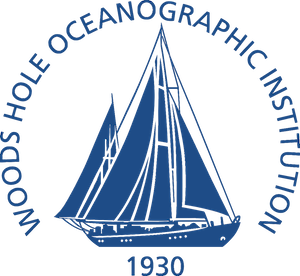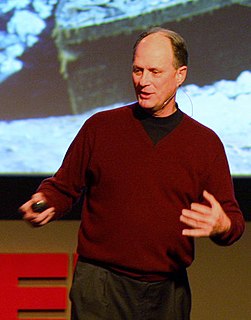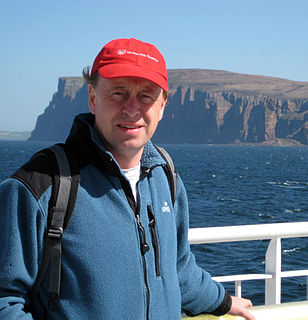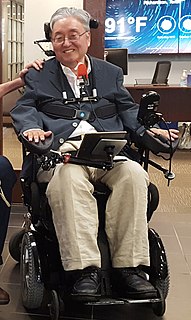Related Research Articles

The Woods Hole Oceanographic Institution is a private, nonprofit research and higher education facility dedicated to the study of marine science and engineering. WHOI is dedicated to advancing knowledge of the ocean and its connection with the Earth system through a sustained commitment to excellence in science, engineering, and education, and to the application of this knowledge to problems facing society.

Alvin (DSV-2) is a manned deep-ocean research submersible owned by the United States Navy and operated by the Woods Hole Oceanographic Institution (WHOI) in Woods Hole, Massachusetts. The vehicle was built by General Mills' Electronics Group in Minneapolis, Minnesota. Named to honor the prime mover and creative inspiration for the vehicle, Allyn Vine, Alvin was commissioned on 5 June 1964. The submersible is launched from the deep submergence support vessel RV Atlantis (AGOR-25), which is also owned by the U.S. Navy and operated by WHOI. The submersible has made more than 5,000 dives, carrying two scientists and a pilot, to observe the lifeforms that must cope with super-pressures and move about in total darkness, as well as exploring the wreck of Titanic. Research conducted by Alvin has been featured in nearly 2,000 scientific papers.

Robert Duane Ballard is a retired United States Navy officer and a professor of oceanography at the University of Rhode Island who is most noted for his work in underwater archaeology: maritime archaeology and archaeology of shipwrecks. He is most known for the discoveries of the wrecks of the RMS Titanic in 1985, the battleship Bismarck in 1989, and the aircraft carrier USS Yorktown in 1998. He discovered the wreck of John F. Kennedy's PT-109 in 2002 and visited Biuku Gasa and Eroni Kumana, who saved its crew. He leads ocean exploration on E/V Nautilus.

The Scripps Institution of Oceanography in San Diego, California, founded in 1903, is one of the oldest and largest centers for ocean and Earth science research, public service, undergraduate and graduate training in the world. Hundreds of ocean and Earth scientists conduct research with the aid of oceanographic research vessels and shorebased laboratories. Its Old Scripps Building is a U.S. National Historic Landmark. SIO is a division of the University of California San Diego (UCSD). The public explorations center of the institution is the Birch Aquarium at Scripps. Since becoming part of the University of California in 1912, the institution has expanded its scope to include studies of the physics, chemistry, geology, biology, and climate of Earth.

Robert Alan Frosch FREng, is an American scientist who was the fifth administrator of NASA from 1977 to 1981 during the Carter administration.

RV Knorr was a research vessel formerly owned by the U.S. Navy and operated by the Woods Hole Oceanographic Institution for the U.S. research community in coordination with and as a part of the University-National Oceanographic Laboratory System (UNOLS) fleet. On March 14, 2016, Knorr was officially transferred to the Mexican Navy and renamed Rio Tecolutla. She was replaced at Woods Hole by the RV Neil Armstrong. Knorr is best known as the ship that supported researchers as they discovered the wreck of the RMS Titanic in 1985. R/V Knorr (AGOR-15) has traveled more than a million miles—the rough equivalent of two round trips to the Moon or forty trips around the Earth. Her sister ship is the RV Melville.

Peter Clift is a British marine geologist and geophysicist specializing in the geology of Asia and the western Pacific. He is currently the Charles T. McCord Professor of Petroleum Geology at Louisiana State University, which he joined in 2012.

The Hatfield Marine Science Center(HMSC) is a marine science research and education center next to Yaquina Bay of the Pacific Ocean in the U.S. state of Oregon. It is operated by Oregon State University in cooperation with five state and federal agencies co-located on site. Named after Mark Hatfield, a former U.S. Senator from Oregon, the HMSC occupies a 49-acre (20 ha) site in Newport.
Lynne Talley is an American physical oceanographer. A professor of physical oceanography at Scripps Institution of Oceanography, she has served as chief scientist on research ships, where she collected oceanographic hydrography data. She has participated in international steering groups and oversight committees for collection and use of oceanographic data. Talley is a Fellow of the American Meteorological Society, the American Geophysical Union, The Oceanography Society, the American Association for the Advancement of Science, and the American Academy of Arts and Sciences.

Lee Sang-Mook is a Korean marine geologist and computational scientist. He has worked as a researcher at the Korean Ocean Research and Development Institute from 1998 to 2003, and as a professor and researcher at Seoul National University since 2003. As an Associate Professor in the School of Earth and Environmental Sciences, he specializes in Marine Geology and Geophysics. He heads the Undergraduate Interdisciplinary Program in Computational Sciences and the graduate program in Computational Science and Technology.
Robert B. Gagosian is an American oceanographer. In 2016 he is Acting President of the Desert Research Institute in Nevada. Gagosian served as President and CEO of the Consortium for Ocean Leadership in Washington, DC from 2007-2015, where he is currently President Emeritus. Gagosian served as President and Director of the Woods Hole Oceanographic Institution (WHOI) from 1994 to 2006, where he is currently President Emeritus.
Wolfgang "Wolf" Helmut Berger was a German-American oceanographer, geologist, micropaleontologist and emeritus professor at the Scripps Institution of Oceanography, University of California, San Diego. His research interests comprise "micropaleontology, marine sedimentation, ocean productivity, carbon cycle, ocean history, climate history, and history of oceanography."
Elizabeth Thompson "Betty" Bunce was an American geophysicist who became the first female chief scientist of an oceanic expedition at Woods Hole Oceanographic Institution.
Kenneth "Ken" Owen Buesseler is an American marine radiochemist. He is a senior scientist at the Woods Hole Oceanographic Institution.

John Michael Hayes ForMemRS was a scientist emeritus at Woods Hole Oceanographic Institution in Woods Hole, Massachusetts.
Susan Elizabeth Anne Wijffels is an Australian oceanographer employed by the Woods Hole Oceanographic Institution (WHOI); she formerly worked from the Commonwealth Scientific and Industrial Research Organisation (CSIRO) in Australia. Wijffels specialises in quantifying global ocean change over the past 50 years, including its anatomy and drivers. She is recognised for her international and national leadership of the Global Ocean Observing System. She is regarded as an expert in the Indonesian Throughflow and its role in global climate.
Erik Harold Hauri was an American geochemist at the Carnegie Institution for Science. He researched the movement of matter inside planets and how volatile compounds such as water originated on Earth and other planetary bodies, and their effects on volcanic systems.
Caroline C. Ummenhofer is a physical oceanographer at the Woods Hole Oceanographic Institution where she studies extreme weather events with a particular focus on the Indian Ocean. Ummenhofer makes an effort to connect her discoveries about predicting extreme weather events and precipitation to helping the nations affected.
Kenneth Orris "K.O." Emery (1914–1998) was a Canadian-American marine geologist.
Robert R. L. Guillard was a scientist that contributed to the fields of aquaculture, oceanography, and phycology, particularly the phytoplankton. He earned his Ph.D. from Yale University. In 1958, he joined Woods Hole Oceanographic Institution as an associated scientist and later a senior scientist.. In 1982, he moved to Bigelow Laboratory for Ocean Sciences where he helped establish the Provasoli-Guillard National Center for Culture of Marine Phytoplankton (CCMP). He developed the algal culture medium, f/2, which is now commonly used for laboratory studies of marine algae.
References
- ↑ "Christopher R. German, PhD" . Retrieved 6 February 2019.
- ↑ "Alexander von Humboldt Foundation Honors Two WHOI Scientists". Woods Hole Oceanographic Institution. December 12, 2014. Retrieved 6 February 2019.